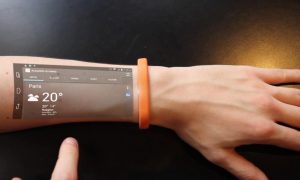Wearable tech is making its way all around our bodies. The market for these digital tech mediators is expected increase 19% reaching $54 billion in growth by 2023, according to a recent GlobalData report.
Consumer growth in this category is primarily driven by advances in digital advances in healthcare, logistics, insurance, fintech, and defense markets, in addition to sales of smartwatches that provide health monitoring, mobile payment options, and cellular connectivity, according to the Wearable Tech - Thematic Research report.
“The wearable tech theme incorporates more than just wrist-worn devices. Smart earwear, or hearables, has become a more prominent category with the emergence of devices that incorporate voice-activated virtual assistants such as Apple’s Siri and Google’s Assistant,” says Ed Thomas, principal analyst for Technology Thematic Research in a recent GlobalData release. “Hearables also have the potential to match, or even exceed, the performance of smartwatches when it comes to providing health monitoring services.”
Fitbit, Apple, and Microsoft are just a handful of the companies leading the pack in innovation.
In the past four years, alone, Apple has moved from the first smartwatch to AirPods, and holographic-driven smart glasses. Fitbit approached the wearable tech from another angle with it’s wristbands, activity trackers, and other fitness wearables, offering a platform were users can keep track of their activity via apps and real-time personalized dashboard. Additionally, the company has entered similar Apple Pay territory with its NFC-based payments systems for users to make payments via Fitbit smartwatches.
Virtual reality Oculus headsets put Facebook on the tech wear map, but the social media giant is taking things a step forward as it develops a band inspired by Braille and Tadoma to help teach people how to “feel” words by sending users specific vibrations that can assist them in reading incoming messages.
Meanwhile, Microsoft currently has patents for new fitness-focussed smart rings and bands. Samsung is working on developing smart clothes, and Sony recently introduced the Wena straps, which connect to traditional watches for seamless payment, general fitness tracking, and other notifications.
Eventually, there may just be a wearable device for nearly every section of the body that can decipher and open a portal (beyond contactless payments) to more than we can imagine. “Over the next few years, wearable devices will become smarter,” says Thomas, “as they incorporate technologies like artificial intelligence and augmented reality and so their relevance, particularly to enterprise users across industries, will only increase.”























